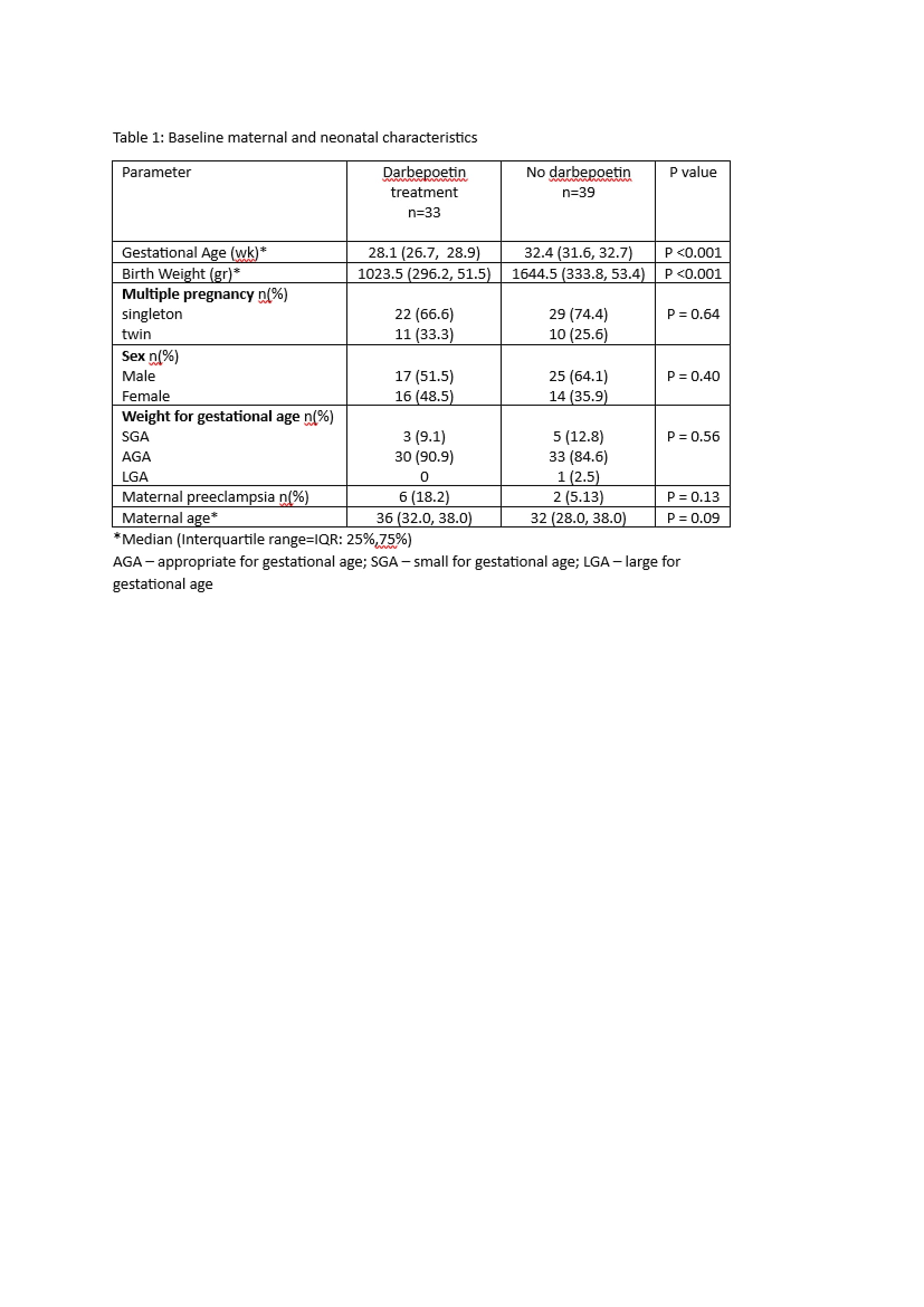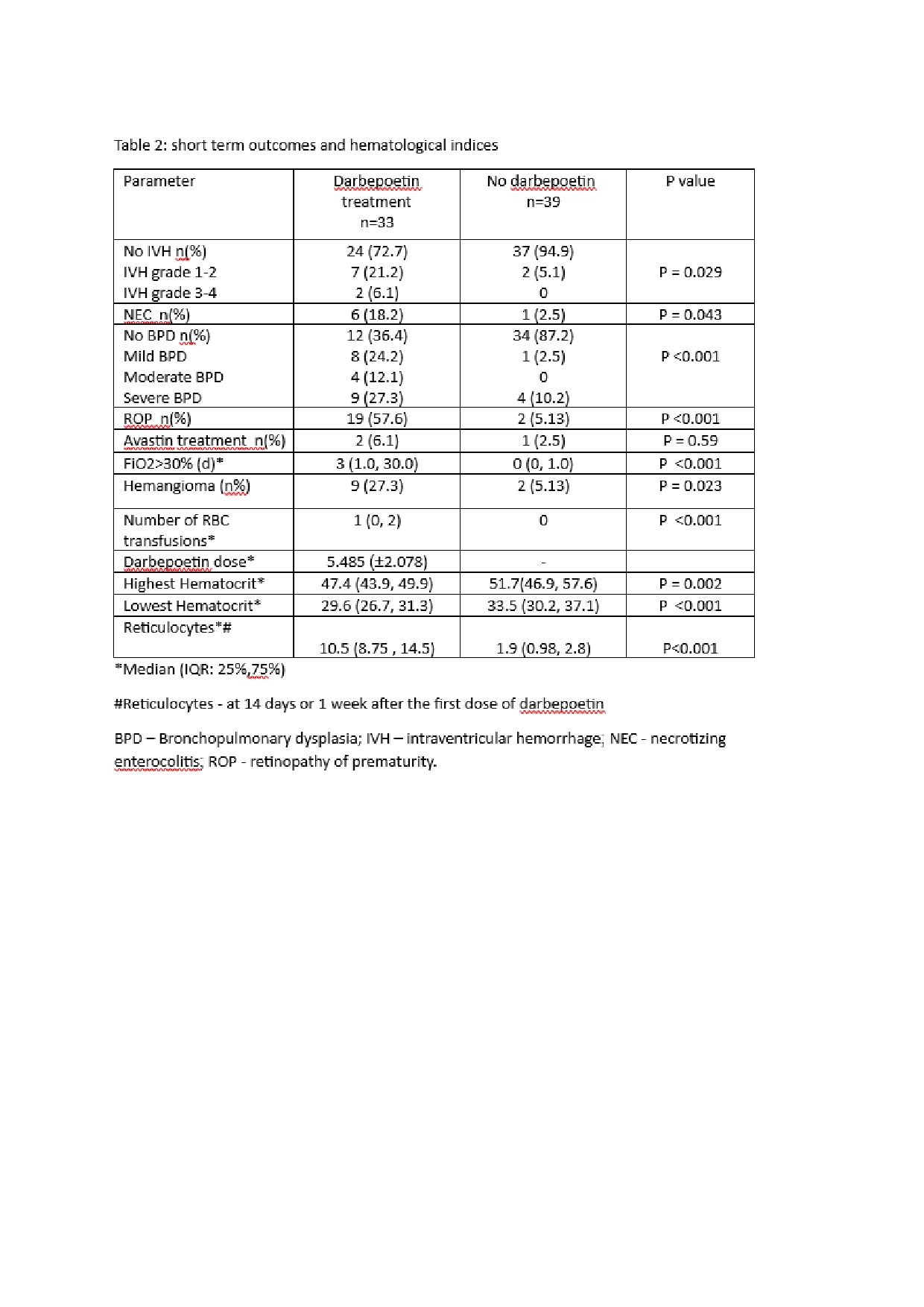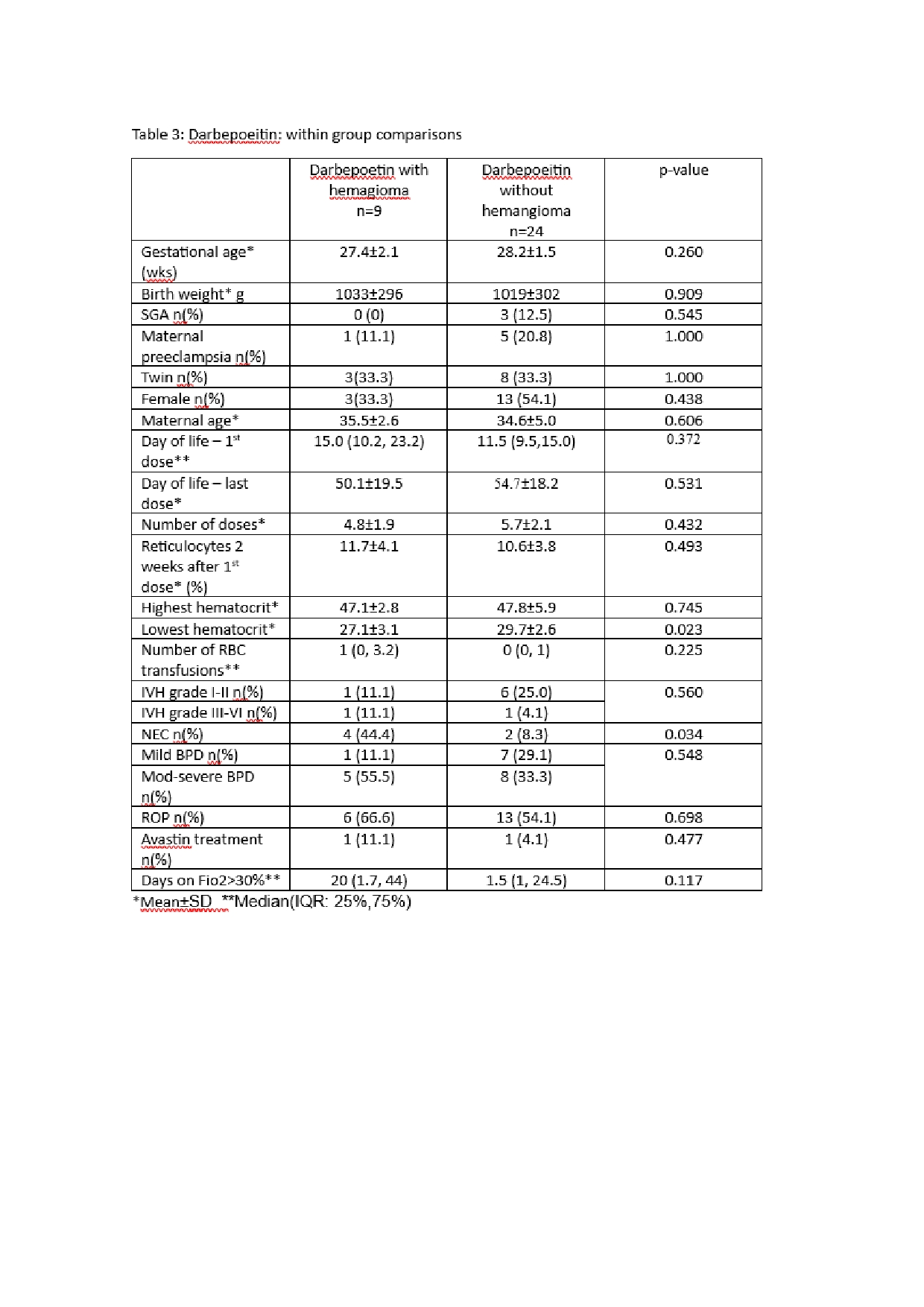Neonatology
Session: Neonatal General 1: NICU Care
56 - The relationship between darbepoetin treatment to prevent anemia in premature infants and infantile hemangiomas
Friday, May 3, 2024
5:15 PM - 7:15 PM ET
Poster Number: 56
Publication Number: 56.278
Publication Number: 56.278
- IS
Irit Shoris (she/her/hers)
Neonatal Nurse Practitioner
Bnai Zion Medical Center
Haifa, HaZafon, Israel
Presenting Author(s)
Background: Premature infants are at high risk of anemia of prematurity, which can lead to poor growth, apneas and hemodynamic changes. Blood transfusions are the mainstay of treatment, however, they are not without risks. Erythropoeitin has been used effectively to decrease the need for transfusions in the treatment of anemia of prematurity. Recently, another form of erythropoietin, darbepoetin, with a longer half-life became available for use. Erythropoietin has been previously related to retinopathy of prematurity as well as to simple hemangiomas in infancy. Scarce information exists regarding the relationship between the administration of darbepoetin and the appearance of simple hemangiomas in premature infants.
Objective: To assess the relationship between darbepoeitin administration in preterm infants and the appearance of simple cutaneous hemangiomas prior to discharge.
Design/Methods: This was a retrospective observational study including all preterm infants born < 32 weeks of gestation during 2021-2023 at Bnai-Zion Medical Center. Data were extracted from our electronic database including maternal and infant clinical and demographic information as well as exposure to darbopoeitin and the appearance of hemangiomas before discharge.
Results: The cohort comprised 72 infants: 33 infants treated by darbepoetin and 39 infants who were not. Baseline characteristics are presented in Table 1. As expected, gestational age and birth weight were significantly lower and the rate of prematurity-associated complications was higher in the group exposed to darbepoetin compared to the group who were not (Table 2), since our practice is to treat infants at higher risk. The rate of simple hemangiomas was significantly higher in the exposed group compared to the unexposed group (27% vs 5% respectively, p=0.023). In a logistic regression model derbepoeitin remained significantly associated with hemangiomas when accounting for birth weight and maternal age (OR 3.33, 95% CI 1.09-10.1). Within the group receiving derbepoetin, the rate of necrotizing enterocolitis was significantly higher, and lowest hematocrit value recorded during hospital stay was lower in those who developed hemangiomas compared to those who did not. There were no other within-group differences (Table 3).
Conclusion(s): We found a significantly higher rate of hemangiomas in preterm infants exposed to derbepoeitin compared to non-exposed infants. Within the derbopoeitin group, infants with hemangiomas had a lower hematocrit nadir and a higher rate of NEC compared to those without hemangiomas.



